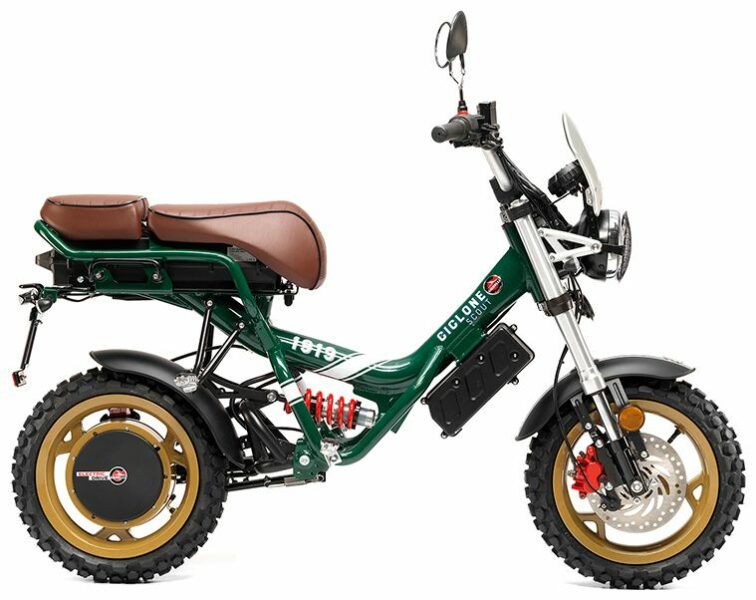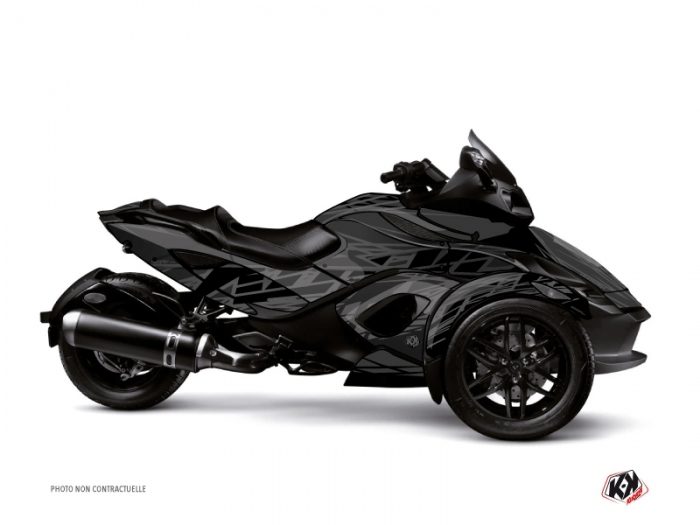
Great Wall Steed Review 2019
Content
- Is there anything interesting about its design? 6/10
- How practical is the interior space? 5/10
- Does it represent good value for money? What functions does it have? 9/10
- What are the main characteristics of the engine and transmission? 6/10
- How much fuel does it consume? 6/10
- What is it like to drive? 6/10
- What safety equipment is installed? What is the safety rating? 5/10
- How much does it cost to own? What kind of guarantee is provided? 6/10
- Verdict
Some people just want to save money.
They may know that they can spend a little more to get a brand with a different reputation or something that gets better reviews. Just think about the last time you thought about going to a restaurant for the first time - did you read the reviews? See what people thought? Roll the dice and go there anyway?
This is the kind of equation you might consider if you think of the Great Wall horse. There are better models from bigger brands, but none are as cheap as this one if you just want something brand new and full of features.
The question is, is it worth considering? Is it worth throwing the dice? We must leave this call to you.
| Great Wall Steed 2019: (4X2) | |
|---|---|
| Safety Rating | - |
| engine's type | 2.0 L turbo |
| fuel type | Diesel |
| Fuel efficiency | 9l / 100km |
| Landing | 5 Places |
| Price from | $11,100 |
Is there anything interesting about its design? 6/10
The exterior of the Great Wall of China is fairly modern, even if the proportions are a little awkward. Keep in mind that Steed is one of the longest and lowest motorcycles.
The dimensions are 5345 mm long, with a width of 1800 mm and a height of 1760 mm.
The dimensions are 5345mm long on a huge 3200mm wheelbase, with a width of 1800mm and a height of 1760mm. There’s just 171mm of ground clearance for this one, which is the 4×2 model.
The wheelbase looks huge and the rear doors are quite small considering the car's length (plus huge door handles!). The B-pillars are pushed back further than they should be, making getting in and out of the second row seats difficult.
The appearance of the Great Wall is quite modern.
However, the interior design is pretty smart - compared to some other older models, the Steed has reasonable ergonomics, and the controls and materials are also of acceptable quality.
But our car, which had only been driven a couple of thousand kilometers, was missing some of the exterior trim, as well as a few loose parts inside. The quality is better than the first generation Great Wall, but we hope the brand's next generation global ute will be better again. It should be.
How practical is the interior space? 5/10
As mentioned above, the Steed's interior is acceptable for a budget car, but that's about as weak praise as saying "you look good" to your reflection in the mirror after a big night out.
The Steed's interior is acceptable for a budget car.
There are a few decent elements in the cabin - the dashboard design is decent, and the controls are laid out quite logically. If you are moving from the first generation of the Great Wall, you will be amazed.
Things like a large media screen and a leather steering wheel, as well as power-adjustable front seats and leather seat trim that this time looks more like cowhide than converted trash bags, will all count towards a positive first impression.
However, the screen is one of the most confusing I've come across - you need to connect your phone by pressing an icon that looks like a computer tower connected to the phone. Why? Also, the loading times on the screen are terrible and when you flip it the screen just goes black. There is no rear view camera as standard, which is bad. You can choose it if you want, just like sat nav is optional - and it's very similar to UBD or Melways. Plus the volume equalization is very inconsistent.
The knee room is cramped, but the head is okay.
As mentioned above, getting in and out for rear seat passengers is bad - anyone with feet larger than a size six will struggle to get in and out without getting tangled up. Once you get back there, knee room is tight, but head room is fine.
There's plenty of storage everywhere - there are cupholders between the front seats, door pockets with bottle holders, and several compartments for loose items in the front. There are map pockets in the back, but no other storage options unless you fold down the rear seatback.
Does it represent good value for money? What functions does it have? 9/10
The biggest advantage of the Great Wall is its price and specifications.
Standard features include automatic headlights, LED daytime running lights and 16-inch alloy wheels.
You can get a single cab version of the base model for less than twenty. This model is a 4×2 double cab that has a list price of $24,990 plus travel expenses, but it almost always comes with a special price of $22,990. Need 4×4? Pay two more grand and you'll get it.
Steed offers an extensive list of standard features including automatic headlights, automatic wipers, LED daytime running lights, front and rear fog lights, 16-inch alloy wheels, cruise control, single zone climate control, heated front seats, leather trim, power steering wheel leather-lined, six-speaker stereo with USB and Bluetooth connectivity, and the aforementioned secondary camera and GPS navigation. You get carpet on the floor, not vinyl.
There’s a big step bumper to allow easy access to the tray.
The exterior is packed with features that fashion lovers will love - a large stepped bumper for easy access to the tray, which has a bath liner as standard, as well as a sports bar. Access to the cab will be easy for short people, as side steps are provided as standard.
What are the main characteristics of the engine and transmission? 6/10
The Great Wall uses a 2.0-liter turbodiesel four-cylinder engine with 110 kW (at 4000 rpm) and 310 Nm (1800 to 2800 rpm) of torque, which is only available with a six-speed manual transmission. There is no automatic transmission. But you can get a petrol engine if you want, which is becoming increasingly rare in the ute segment.
Great Wall uses a 2.0-litre turbodiesel four-cylinder engine.
The payload capacity for the Great Wall Steed 4×2 is decent for a dual cab pickup at 1022kg, and it has a gross vehicle mass of 2820kg. The Steed has the standard 750kg un-braked towing capacity, but a meagre 2000kg braked towing rating.
How much fuel does it consume? 6/10
The Great Wall claims fuel consumption of 9.0 liters per 100 kilometers in our test specification, and in our test regimen, which included driving with and without cargo on the road for several hundred kilometers, fuel consumption was 11.1 l/100 km. Good, but not great.
The Great Wall's fuel tank capacity is 58 litres, low for the class, and there is no long-travel fuel tank option.
What is it like to drive? 6/10
A lot of utes these days are aiming to be dual purpose vehicles, with passenger-amenable ride, handling, steering and powertrain combinations that mean you can use them for work and play.
The Great Wall? Well, it’s more work-oriented. That’s a nice way of saying you won’t want to subject your family to this truck, but your workmates? Too bad for them.
The ride is stiff, with no weight in the rear, bumpy on bumpy sections of road, and bumpy after a sharp edge.
The steering is light but requires a lot of turns from lock to lock.
The steering is light but requires a lot of turns from lock to lock and the turning radius is large. You have to keep this in mind when parking, plus the view from the driver's seat is not as good as it could be.
The engine happily uses every gear but first, but manual shifting isn't fun, and the torque on offer doesn't work smoothly.
I will say this - at 750 kilograms at the rear, the rear suspension did not sag much at all. Steed offers a large payload and the chassis can handle it.
With 750 kilograms in the rear, the rear suspension didn't sag much at all.
What doesn't handle the weight is the engine - we had 750kg in the tray and four adults on board and it was worse than sluggish. I struggled to get it to move, revving harder than usual on a diesel ute. There are a lot of lags to contend with and the engine just doesn't like low speed driving at all.
But at higher speeds it got into a groove and the ride was actually very well balanced with the mass on the rear axle. Plus the fact that it has four-wheel disc brakes - unlike many of its newer and more high-tech competitors - means that braking performance was pretty promising too.
Warranty and safety rating
Basic Warranty
3 years / 100,000 km
guarantee
What safety equipment is installed? What is the safety rating? 5/10
There is not much happy reading here.
The Great Wall Steed received a terrible two-star safety rating in ANCAP crash tests when it was tested in 2016, although with a disclaimer, that rating only applies to "4×2 double cab petrol variants". It's a nuisance, especially considering it has dual front, front side and side airbags as standard in the double cab.
Tire pressure sensors and rear parking sensors are standard, but a camera is not standard. There is also no automatic emergency braking (AEB) or any other advanced safety technology.
But it does have anti-lock brakes with ABS, electronic brake distribution, stability control, descent control, and hill hold control. There are three-point harnesses for all seating positions, and if you dare, both models have dual ISOFIX child seat attachment points and three top tether points.
How much does it cost to own? What kind of guarantee is provided? 6/10
In April of this year, Great Wall introduced a five-year, 150,000 km warranty, which is good for a challenger brand but doesn't push the boundaries for the ute segment. There is also a three-year roadside assistance insurance.
There is no capped price servicing plan, but the Steed requires maintenance every 12 months or 15,000km (following an initial six-month checkup).
Worried about issues, issues, malfunctions, common complaints, transmission or engine reliability? Visit our Great Wall issues page.
Verdict
If you're just looking for a new bike at a low price, the Great Wall Steed might offer you a bit of oomph - it's not terrible, but it's far from perfect either...
My advice: see what used HiLux or Triton you can buy for the same money.

